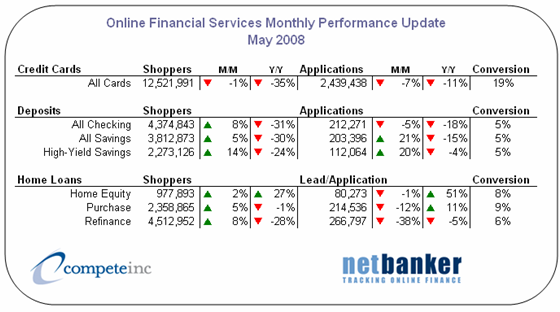 In the year or so that they’ve been widely available, so-called reward checking, those high-yielding accounts that require a hefty number of debit card transactions (see note 1), have attracted quite a following.
In the year or so that they’ve been widely available, so-called reward checking, those high-yielding accounts that require a hefty number of debit card transactions (see note 1), have attracted quite a following.
 But besides the number of blog posts and press mentions, we’ve had few other metrics upon which to gauge their success. Until now. In an email to me yesterday, the company behind many of the accounts, BancVue, laid out the total rewards checking results across its client base:
But besides the number of blog posts and press mentions, we’ve had few other metrics upon which to gauge their success. Until now. In an email to me yesterday, the company behind many of the accounts, BancVue, laid out the total rewards checking results across its client base:
- 381 financial institutions live
- 610,000 reward checking accounts
- $5.5 billion on deposit in the accounts
- $9,000 average balance
- Opening more than 13,000 accounts per week (700,000 annual run rate)
- Average of more than $14 million in deposits per financial institution
- Average of 1,600 accounts per financial institution
Although $5 billion isn’t even the rounding error across the entire $3-trillion U.S. retail deposit market, it’s real money to the smaller banks and credit unions offering the program.
Notes:
1. Most accounts require 10 to 12 debit transactions per month in order to earn the high yield. For more info, see our previous coverage and Finovate Startup video here.
2. Upper-right graphic comes courtesy of First State Bank, Gainesville, TX.






























